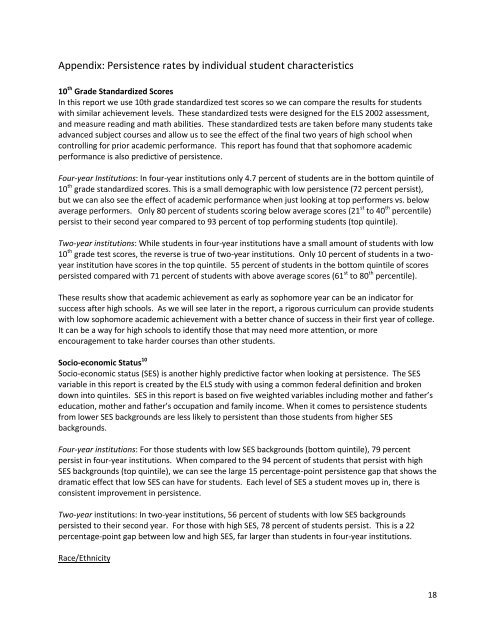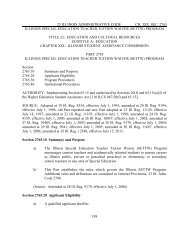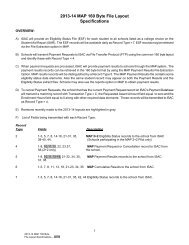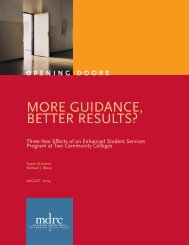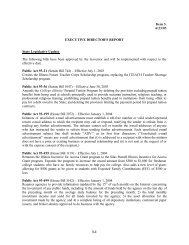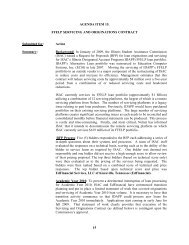High school rigor and good advice: Setting up students to succeed
High school rigor and good advice: Setting up students to succeed
High school rigor and good advice: Setting up students to succeed
You also want an ePaper? Increase the reach of your titles
YUMPU automatically turns print PDFs into web optimized ePapers that Google loves.
Appendix: Persistence rates by individual student characteristics<br />
10 th Grade St<strong>and</strong>ardized Scores<br />
In this report we use 10th grade st<strong>and</strong>ardized test scores so we can compare the results for <strong>students</strong><br />
with similar achievement levels. These st<strong>and</strong>ardized tests were designed for the ELS 2002 assessment,<br />
<strong>and</strong> measure reading <strong>and</strong> math abilities. These st<strong>and</strong>ardized tests are taken before many <strong>students</strong> take<br />
advanced subject courses <strong>and</strong> allow us <strong>to</strong> see the effect of the final two years of high <strong>school</strong> when<br />
controlling for prior academic performance. This report has found that that sophomore academic<br />
performance is also predictive of persistence.<br />
Four-year Institutions: In four-year institutions only 4.7 percent of <strong>students</strong> are in the bot<strong>to</strong>m quintile of<br />
10 th grade st<strong>and</strong>ardized scores. This is a small demographic with low persistence (72 percent persist),<br />
but we can also see the effect of academic performance when just looking at <strong>to</strong>p performers vs. below<br />
average performers. Only 80 percent of <strong>students</strong> scoring below average scores (21 st <strong>to</strong> 40 th percentile)<br />
persist <strong>to</strong> their second year compared <strong>to</strong> 93 percent of <strong>to</strong>p performing <strong>students</strong> (<strong>to</strong>p quintile).<br />
Two-year institutions: While <strong>students</strong> in four-year institutions have a small amount of <strong>students</strong> with low<br />
10 th grade test scores, the reverse is true of two-year institutions. Only 10 percent of <strong>students</strong> in a twoyear<br />
institution have scores in the <strong>to</strong>p quintile. 55 percent of <strong>students</strong> in the bot<strong>to</strong>m quintile of scores<br />
persisted compared with 71 percent of <strong>students</strong> with above average scores (61 st <strong>to</strong> 80 th percentile).<br />
These results show that academic achievement as early as sophomore year can be an indica<strong>to</strong>r for<br />
success after high <strong>school</strong>s. As we will see later in the report, a <strong>rigor</strong>ous curriculum can provide <strong>students</strong><br />
with low sophomore academic achievement with a better chance of success in their first year of college.<br />
It can be a way for high <strong>school</strong>s <strong>to</strong> identify those that may need more attention, or more<br />
encouragement <strong>to</strong> take harder courses than other <strong>students</strong>.<br />
Socio-economic Status 10<br />
Socio-economic status (SES) is another highly predictive fac<strong>to</strong>r when looking at persistence. The SES<br />
variable in this report is created by the ELS study with using a common federal definition <strong>and</strong> broken<br />
down in<strong>to</strong> quintiles. SES in this report is based on five weighted variables including mother <strong>and</strong> father’s<br />
education, mother <strong>and</strong> father’s occ<strong>up</strong>ation <strong>and</strong> family income. When it comes <strong>to</strong> persistence <strong>students</strong><br />
from lower SES backgrounds are less likely <strong>to</strong> persistent than those <strong>students</strong> from higher SES<br />
backgrounds.<br />
Four-year institutions: For those <strong>students</strong> with low SES backgrounds (bot<strong>to</strong>m quintile), 79 percent<br />
persist in four-year institutions. When compared <strong>to</strong> the 94 percent of <strong>students</strong> that persist with high<br />
SES backgrounds (<strong>to</strong>p quintile), we can see the large 15 percentage-point persistence gap that shows the<br />
dramatic effect that low SES can have for <strong>students</strong>. Each level of SES a student moves <strong>up</strong> in, there is<br />
consistent improvement in persistence.<br />
Two-year institutions: In two-year institutions, 56 percent of <strong>students</strong> with low SES backgrounds<br />
persisted <strong>to</strong> their second year. For those with high SES, 78 percent of <strong>students</strong> persist. This is a 22<br />
percentage-point gap between low <strong>and</strong> high SES, far larger than <strong>students</strong> in four-year institutions.<br />
Race/Ethnicity<br />
18


